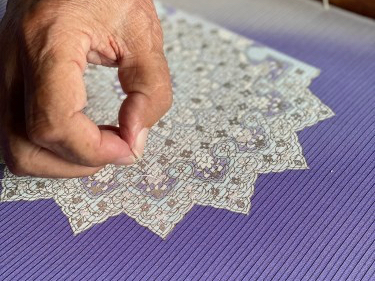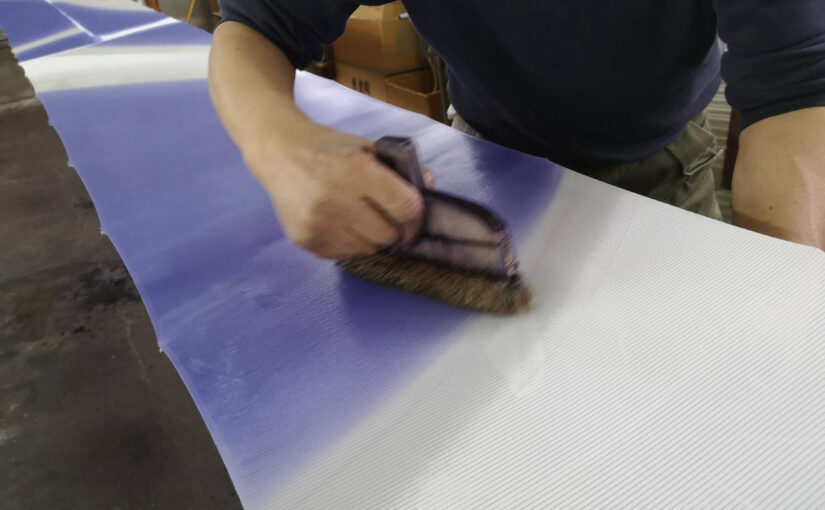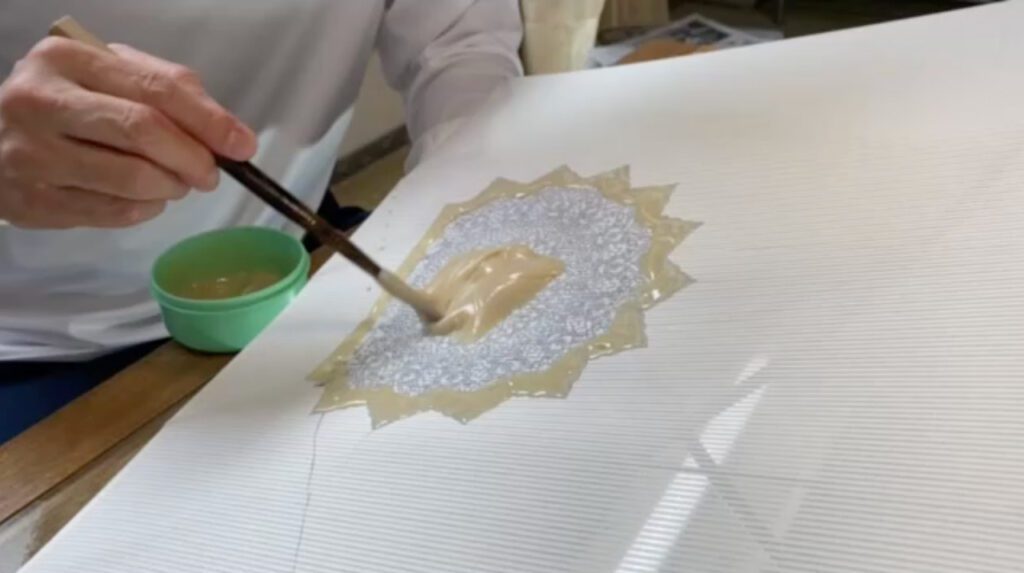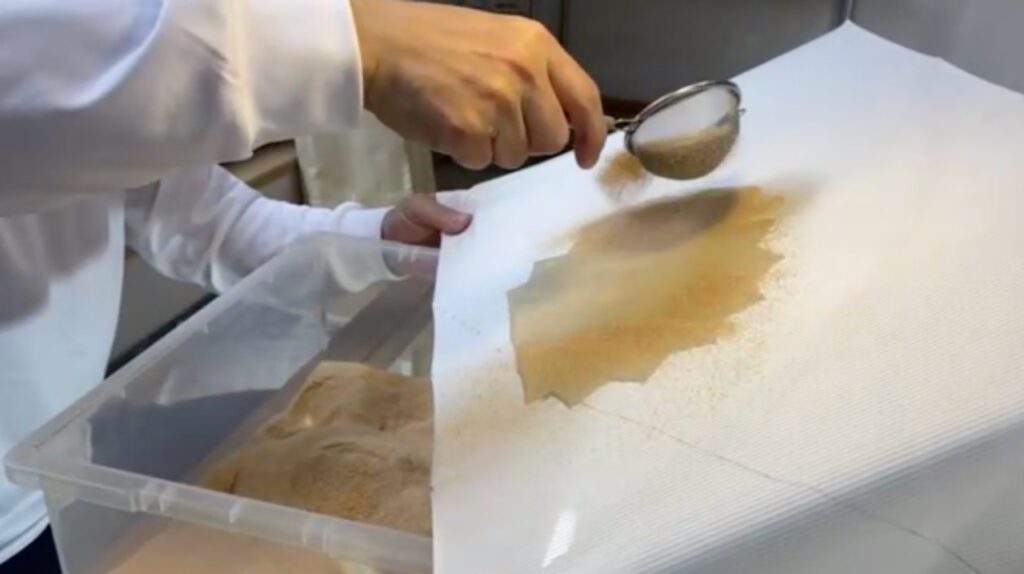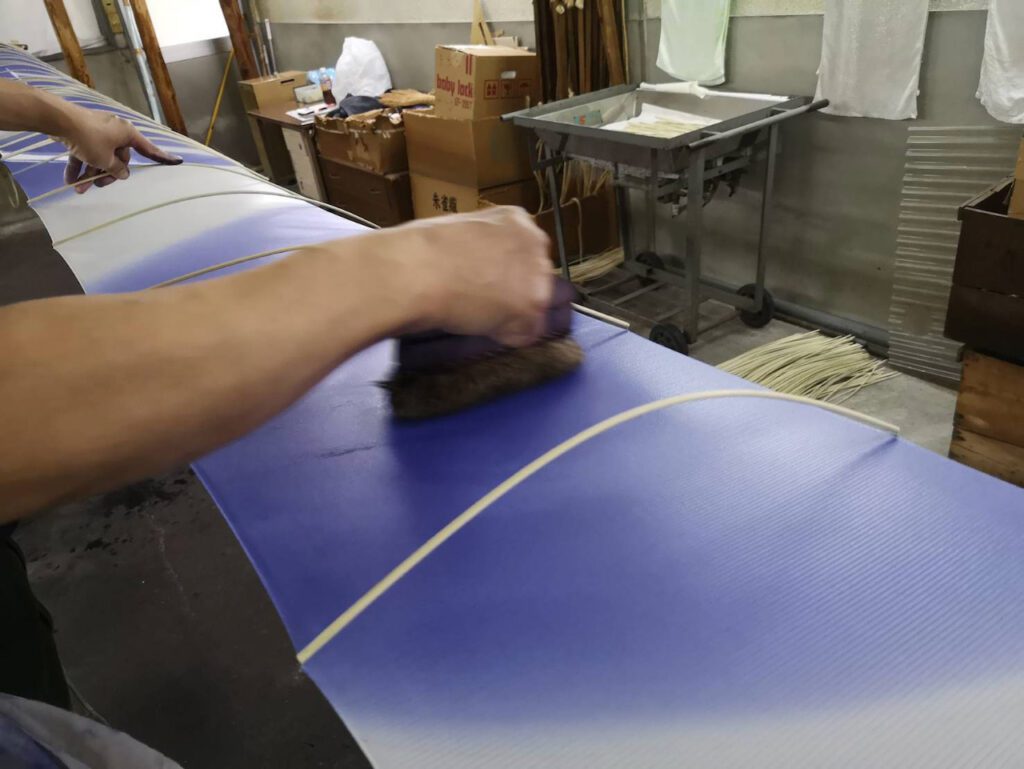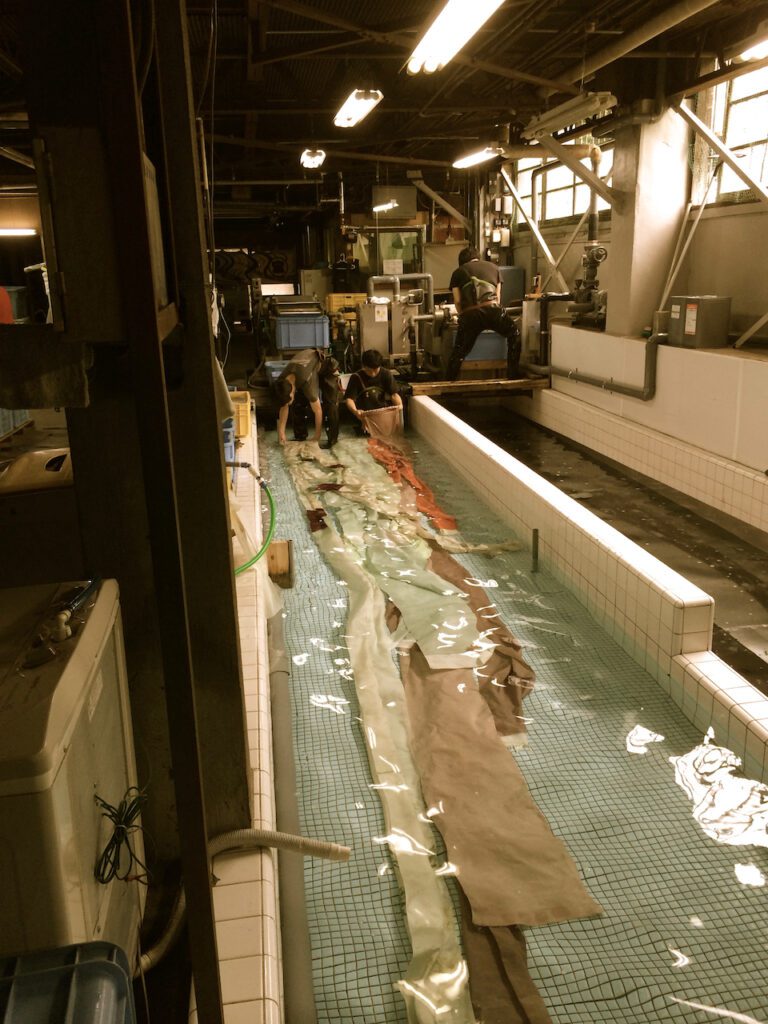We Love Kimono Project 10
The dyeing process is over, but the Yuzen 友禅process is not complete yet, said Mamiya-san, my kimono retailer. What else is there, you may wonder. So did I.
…
According to Kosaka-san, the kimono maker, there are two more processes. One is Kinsai 金彩, and the other is Shishu 刺繍.
Kinsai 金彩 literally means decoration with gold. On top of the design colored with Yuzen resist dyeing, a craftsman applies ultra-thin gold film or paste mixed with fine gold powder. Nowadays, not only gold but silver, platinum, and other metalic colors are added.
Shishu 刺繍 is a Japanese word for embroidery.
Both Kinsai and Shishu add three-dementional aspect to the colorful but flat design of Yuzen dyeing. If you fill with too much Kinsai and shishu, however, the design will lose its original elegance and turn to a flamboyant but ungraceful pattern.
Where to apply Kinsai and Shishu, how much, and how, so that the design achieves the ultimate depth without losing its elegance… every Yuzen kimono maker strives for the perfect combination.

Kosaka-san’s choice was to add some silver paste and embroidery with silver thread on top of the Islamic design. Culculating how the light reflects on the kimono design when worn, he knows exactly which part should be decorated with such shiny objects.
There is no manual, textbook, or algorithm for this work. I doubt if Artificial Intelligence can ever perfect this work.
Mamiya-san told me that this design on the photo is not the actual design that will be on my kimono. When Kosaka-san dyed the kimono fabric, he drew the same design on the edge of the kimono fabric, which usually has some buffer in length.
Knowing this edge will be cut off and not used when the kimono is finally sewn, Kosaka-san is using this pattern as a place where he can experiment. The final design shown on the kimono may be slightly different from this, said Mamiya-san.
…
By the way, did you notice that the kimono fabric has fine stripes across it? This fabric type is called ro絽. After every odd number of weft, like 3, 5, or 7, two warp threads are crossed over, creating small gaps between the weft.

The summer in Japan is hot and humid. You want the fabric to be as airy as possible. Ro is one of the solutions for keeping you cooler.
